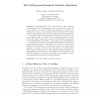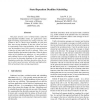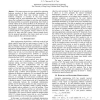1559 search results - page 124 / 312 » The Semantics of Future and Its Use in Program Optimizations |
104
click to vote
EMS
2008
IEEE
14 years 11 months ago
2008
IEEE
Threat modeling plays an important role in the deployment of optimal security controls and a number of threat modeling techniques have been proposed. However, most of the existing...
JFR
2006
14 years 10 months ago
2006
The Defense Applied Research Projects Agency (DARPA) Learning Applied to Ground Vehicles (LAGR) program aims to develop algorithms for autonomous vehicle navigation that learn how...
ESOP
2012
Springer
13 years 5 months ago
2012
Springer
The existing call-by-need λ calculi describe lazy evaluation via equational logics. A programmer can use these logics to safely ascertain whether one term is behaviorally equivale...
RTSS
2002
IEEE
15 years 2 months ago
2002
IEEE
This paper presents a new workload model, called the state-dependent deadline model, for applications whose high-level timing requirements may change with time. The problem is how...
ISCAS
2006
IEEE
15 years 4 months ago
2006
IEEE
This paper proposes two new methods for optimizing objectives and constraints. The GP approach is very general and hardware resources in finite wordlength implementation of it allo...



